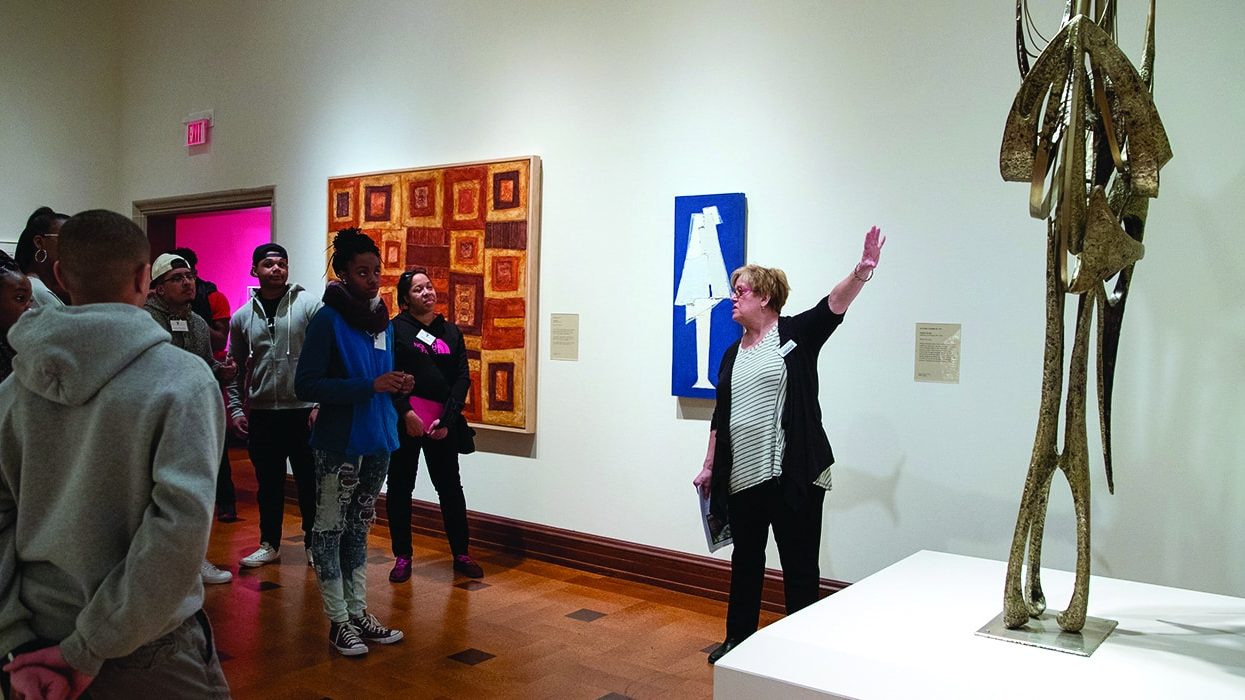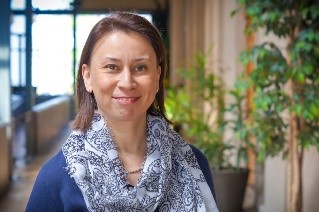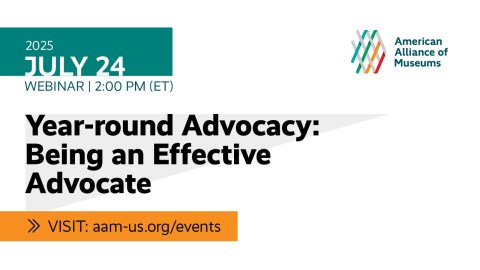
As the director of education for the David Owsley Museum of Art at Ball State University (DOMA) in Muncie, Indiana, I am always on the lookout for resources to help us meet new challenges. The Museum Assessment Program (MAP) offers important tools that have benefited my museum in the past, so when I heard MAP was developing a new Education and Interpretation Assessment, I knew that we would apply!
Our museum completed the Public Dimension Assessment (now known as the Community and Audience Engagement Assessment) in 2008, and since then we’ve doubled in size, as our university has changed presidents twice and grown significantly more diverse in its student body. With all these changes happening, we must reassess the educational impact of our museum if we intend to remain relevant and engaging.
We created DOMA’s interpretation plan when we expanded in 2012 and 2013, working closely with Springuel Consulting to produce a plan that reflected upon inherited practices and built and systematized others that we needed. Six years later, it is now time to review and reassess this plan, especially with key additions to our staff who are expanding our curatorial knowledge of the collection and providing an enhanced potential for interpretation. Going through a self-assessment, completing a peer review with a site visit, and receiving a MAP final assessment report will really take us to the next level.
When I think about how much has changed at DOMA, as well as in the student body and broader Muncie community, I see that we can no longer conduct education as we once did. In my role as a peer reviewer for the MAP program, I’ve seen that many other museums are experiencing similar changes and challenges.
When I participated in the MAP Education Convening meeting held last March to help inform the development of the new assessment, I became even more excited and motivated. As I heard my museum education colleagues’ concerns and suggestions, I was grateful to know that DOMA could benefit from the sum of their experiences through this new museum tool being shaped by them.
The new Education and Interpretation MAP’s strategies for moving museums from awareness to action—including ample activities, a year-long workbook process, and expanded peer reviewer interaction—stood out to me as features that would greatly benefit our museum. Also, the assessment’s embedded diversity, equity, accessibility, and inclusion goals encourage museums to weave these values upfront into successful museum operations, instead of as an add-on or afterthought. As a MAP peer reviewer myself, I’m also excited there will be additional support for peer reviewers to ensure they have the help and resources to keep museum education colleagues engaged over the year-long process, building a deeper relationship between institution and reviewer.
Educators need to face our challenges head on, and resources, activities, and solutions recommended by our peers are invaluable in the process. At DOMA, my colleagues and I plan to use the Education and Interpretation Assessment as part of our path towards reaccreditation in 2023. Four years may seem a long way away, but if we apply for this MAP in 2021, then the data will be current when we update our core documents for reaccreditation. This timing will also allow for another colleague to apply for a Conservation Assessment Program (CAP), without committing our staff to too many assessments simultaneously.
I look forward to seeing the new Education and Interpretation MAP in action, and I encourage other museums to apply! It was an honor to contribute to the direction of the new assessment with a dozen other museum professionals from around the country. Thank you to them, the AAM staff and consultants, and IMLS, for this critical tool for museums like mine, who want to do the most they can with what they have.
MAP is supported through a cooperative agreement between the Institute of Museum and Library Services and the American Alliance of Museums.
Learn more about MAP – Applications are now being accepting through Dec. 1, 2019!
About the Author:
Tania Said is the director of education for the David Owsley Museum of Art at Ball State University in Muncie, Indiana. She is also a MAP peer reviewer and involved in various art, business, and community organizations. On lucky Friday, September 13, she was bestowed the Mayor’s Arts Educator Award. Her support network makes it possible, especially her husband Steven and son Adam.
About the Museum:
With approximately 1,000 works of art on display and more than 11,000 works total in the collection, the David Owsley Museum of Art at Ball State University offers rich resources for diverse audiences. Educational programming is central to the museum’s mission.








